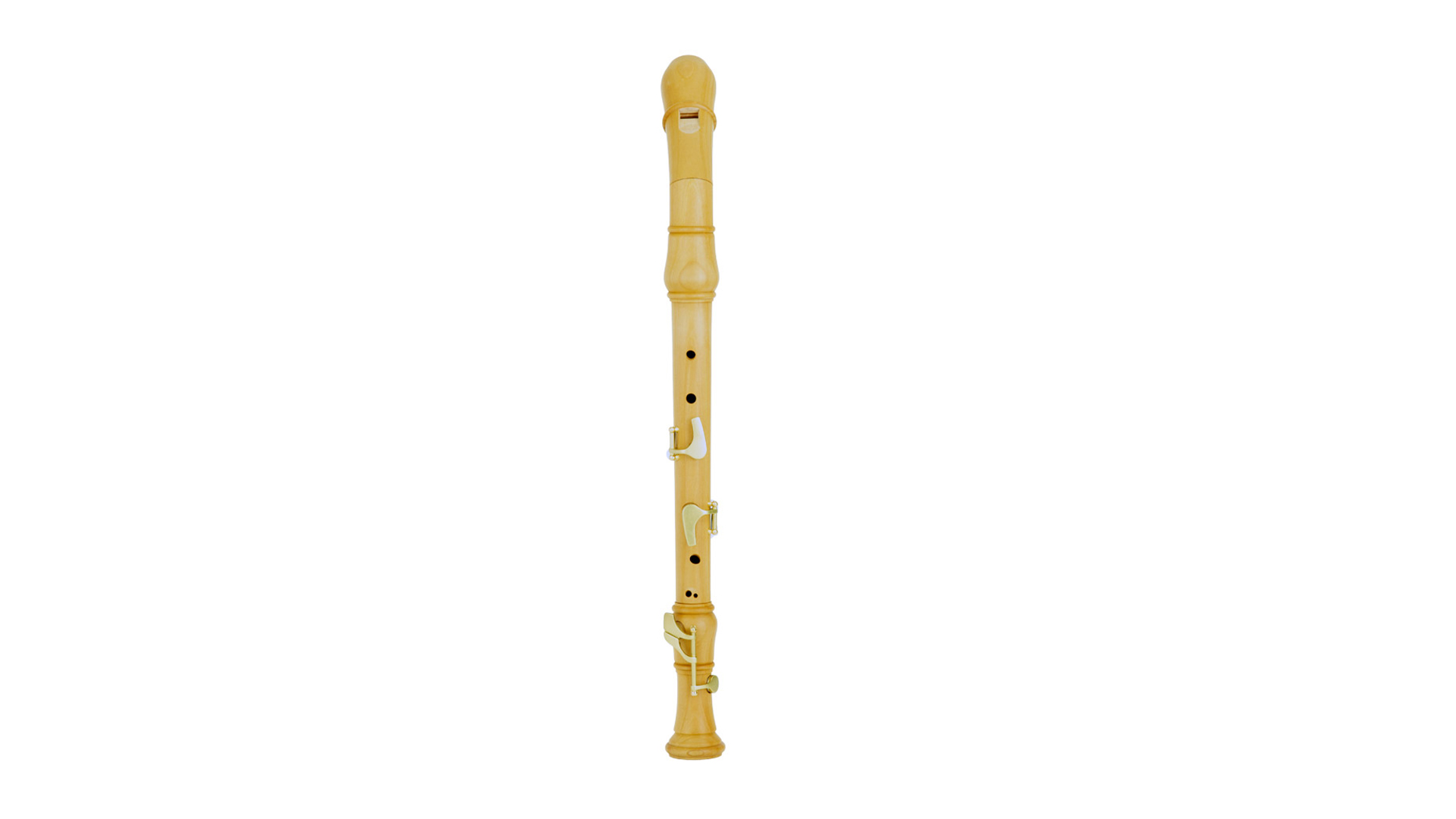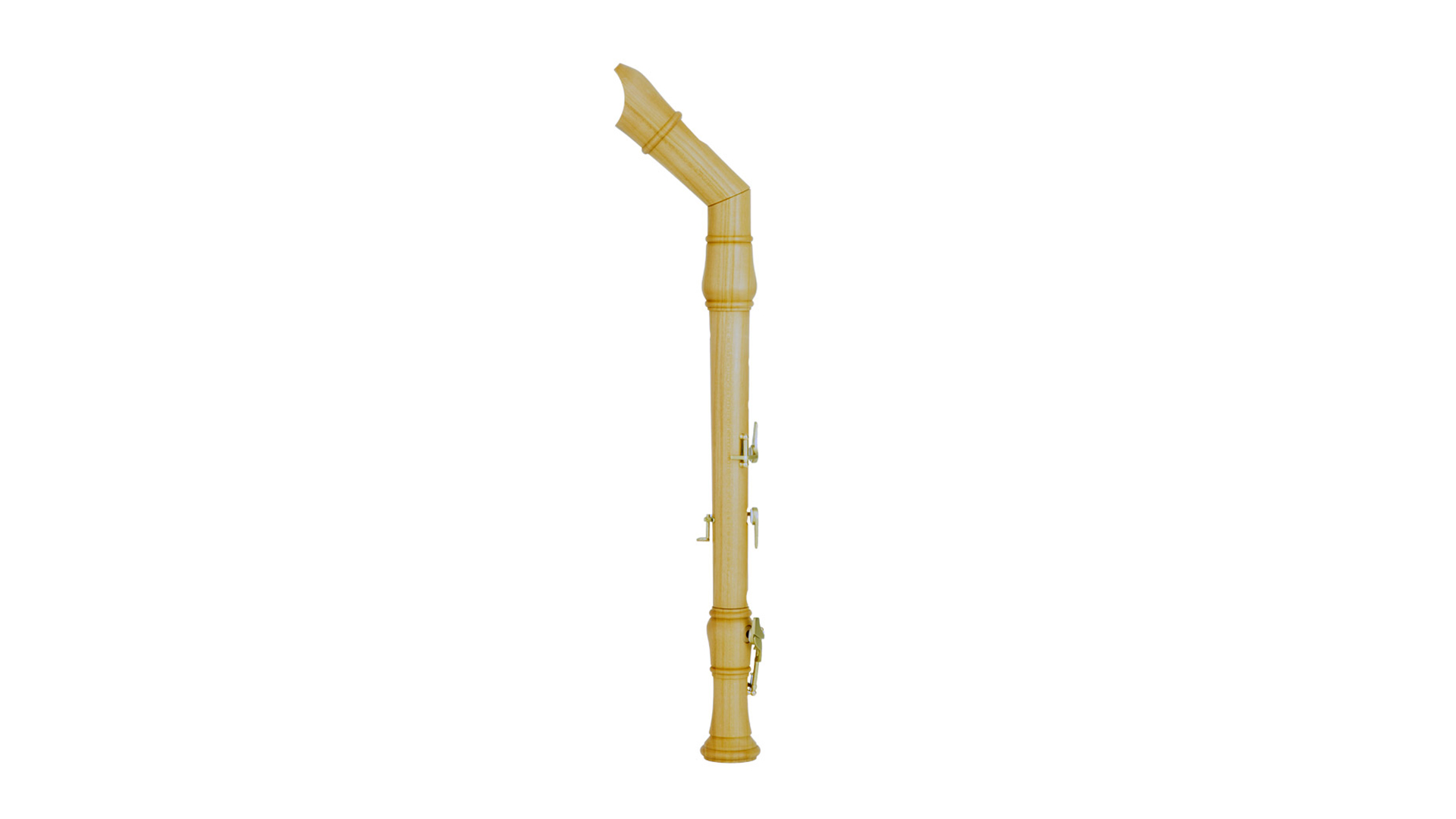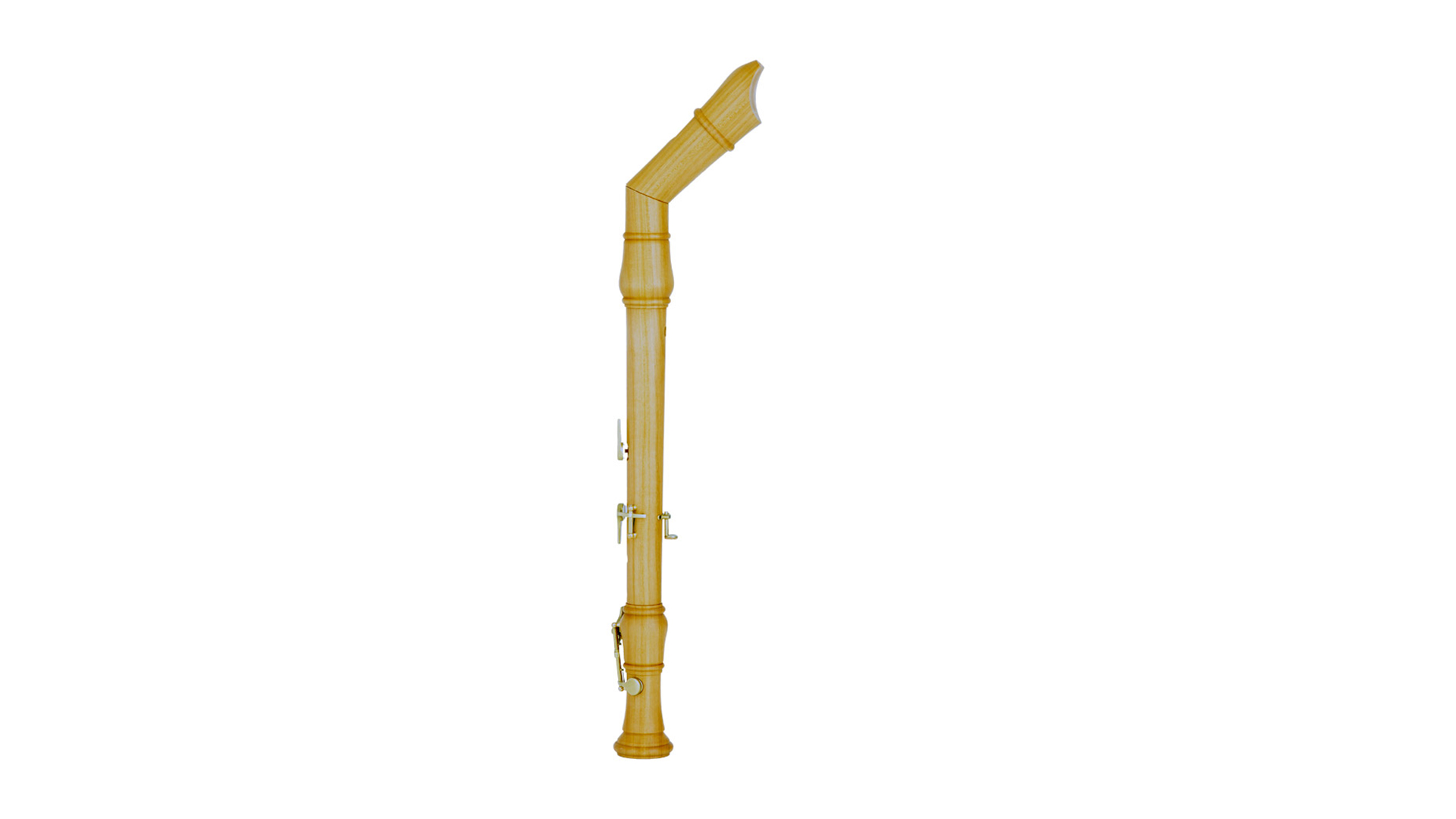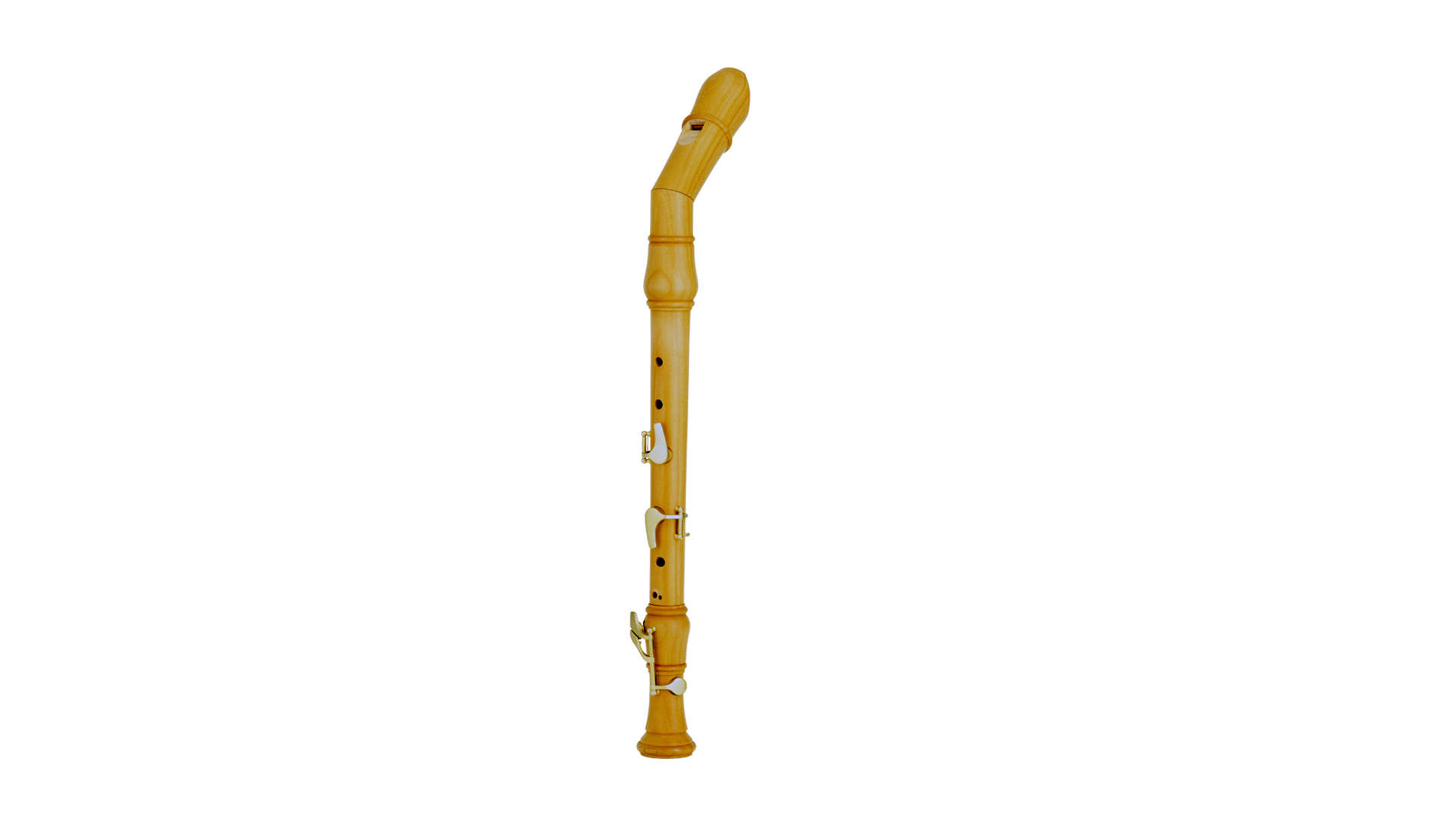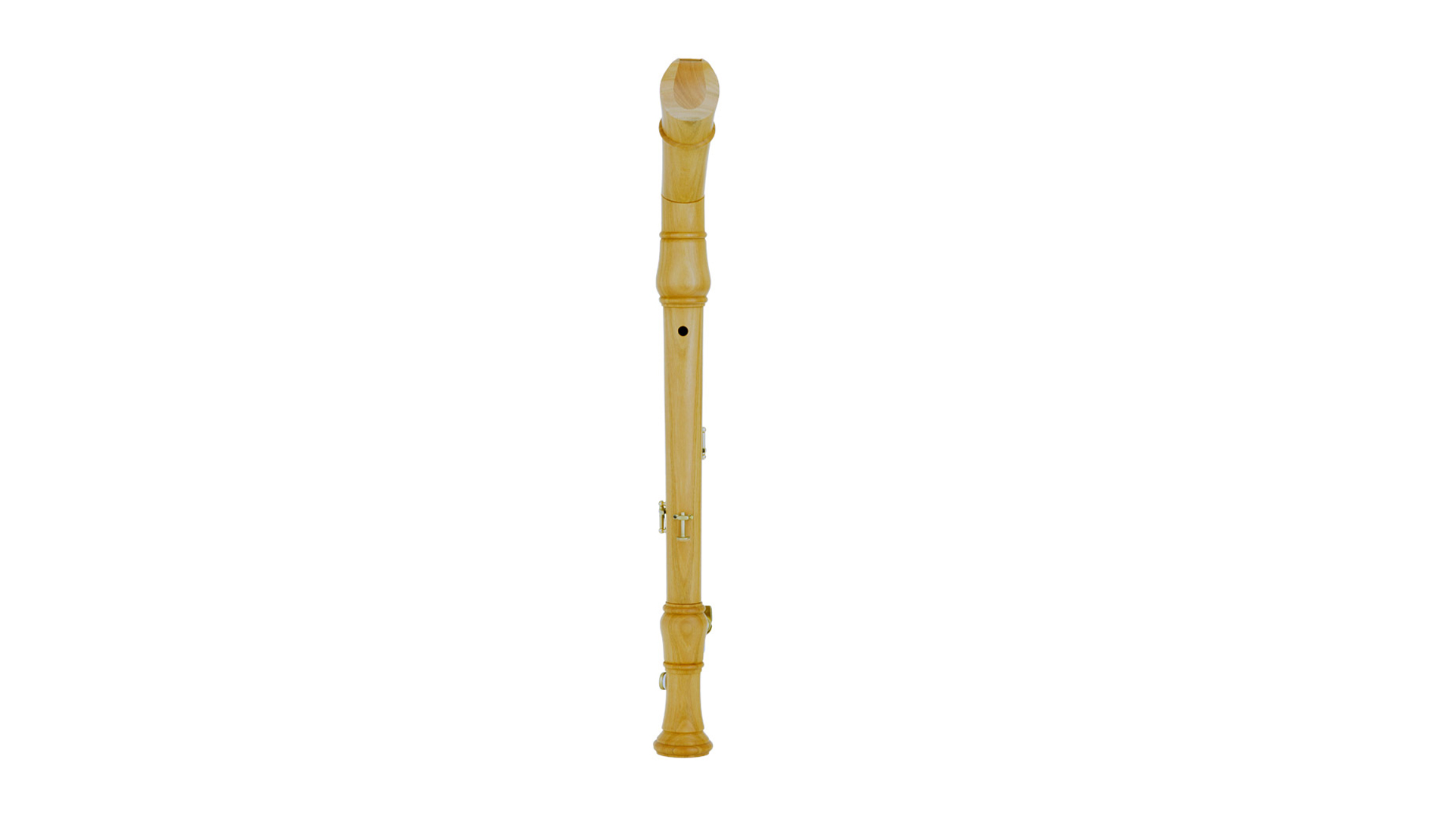Baroque Doublehole, Item: 1593-KUE Natural, 442 Hz
This recorder with the model number: 1593-KUE crafted by Küng is a musical tool, that in daily use unfailingly will give fun.
This circumstance is due to the special combination of the outstanding form in fusion with the qualities of the material Cherrywood.
The bore
The course of the inner bore of the instrument is light cylindroconical. This kind of bore shape gives the recorder such a special tone.In principle, instruments with wider bore sound warmer, fuller, more fundamental and thus more suitable for ensembles than models with narrower scale.
For what styles can the recorder be used for?
Cherrywood is wonderful for instruments used for: focus on choral playing, recorder ensembles and orchestras, other styles are possible.To whom is this instrument addressed?
This means that recorders made of Cherrywood are especially for ambitious amateurs and advanced players recommendable. An additional important law is that a better instrument makes the learning as easier at first glance low-cost offer.The windway of the recorder
The windway is the area in the instrument headpiece where the breath is formed into a thin sheet of air. This air leaf is of one of the most important elements of the instruments tone. At the labium, the air stream is very quickly alternately directed inwards and outwards. This swinging flow stimulates the air in the bore. This is the origin of the recorder tone. This is the reason why the labium must never be damaged. The same applies to the windway. Otherwise suffer the influenceability of the attainable sounds of the instrument.
The windway of the model 1593-KUE of Küng has this windway shape: Straight, conical.Conical shaped windways accelerate the air leaf more than cylindrical windways.
Never violate windway and labium! Their meaning for the sound is very complex in their design. Even minor damages here often lead to a total loss!
Fingerings
The instrument Küng 1593-KUE is manufactured in the version: Baroque Doublehole .
Construction
The number of parts a woodwind instrument influences extraordinarily the way the recorder in use on the one hand is simple to handle in terms of easy gripping and on the other hand for the compact transport.
A point that becomes especially important when larger or multiple instruments to.
{Experienced ensemble players can tell you a thing or two about this. Or ask large playing circles.
Leaders of large ensembles know how useful good and compact recorder bags are.
Packaging and accessories
The model is delivered as standard with: CaseThe following accessories included: Wiper rod, drying cloth, pivot grease, care instructions, fingering chart
Notes before getting a new recorder
Get expert advice!The search for your instrument should in no case be influenced by "generally accepted" rules.
Get your own realizations after testing an instrument. Don't let "expert"-opinions.
Do not let others stop you from trying of an yet unknown instrument.
Your taste is as individual as you are.
Therefore, only you can decide which instrument concept will personally you.
Our recommendation is therefore: Test different brands!
After that you will be surprised and can make a safe decision.
Information about instruments with keys
Not always can tone holes be drilled in the places in the instrument that are comfortable and easy to reach with the fingers. Especially with deep recorders sit for acoustic necessities tone holes adequate to reach. On such instruments, keys are added, which make gripping easier, or possible in the first place.This allows it to be {pleasant|light|ergonomic|conspicuous|above average| good play even by players with smaller hands.
The instrument 1593-KUE has the following flaps: Centerpiece flaps + foot flap
| Accessories: | Wiper rod, drying cloth, pivot grease, care instructions, fingering chart |
|---|---|
| Bore shape: | light cylindroconical |
| Construction: | 3-part (head, middle, foot) |
| Fingering: | Baroque Doublehole |
| Keys: | Centerpiece flaps + foot flap |
| Material: | Cherrywood |
| Material: Botanical name: | Prunus avium |
| Material: Country of origin: | Austria |
| Packing: | Case |
| Surface treatment: | Natural |
| Target group: | Ambitious amateurs and advanced players |
| Weight with case: | 1.037 kg |
| Windway: | Straight, conical |
| Size: | Tenor |
| Blowing type: | Bend head |
| Tuning pitch: | 442 Hz |
| Group: | Recorder |
| Material structure: | Cherry wood: The wood is light in color and has a fine and matte glossy surface. |
| Musical use: | focus on choral playing, recorder ensembles and orchestras, other styles are possible |
| Sound characteristics: | Cherrywood: Light and elegant sound |
Login



